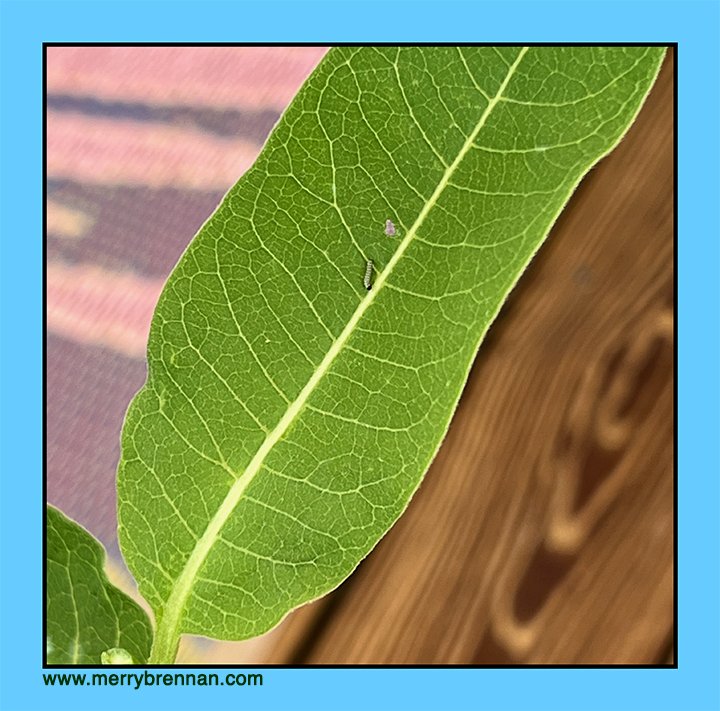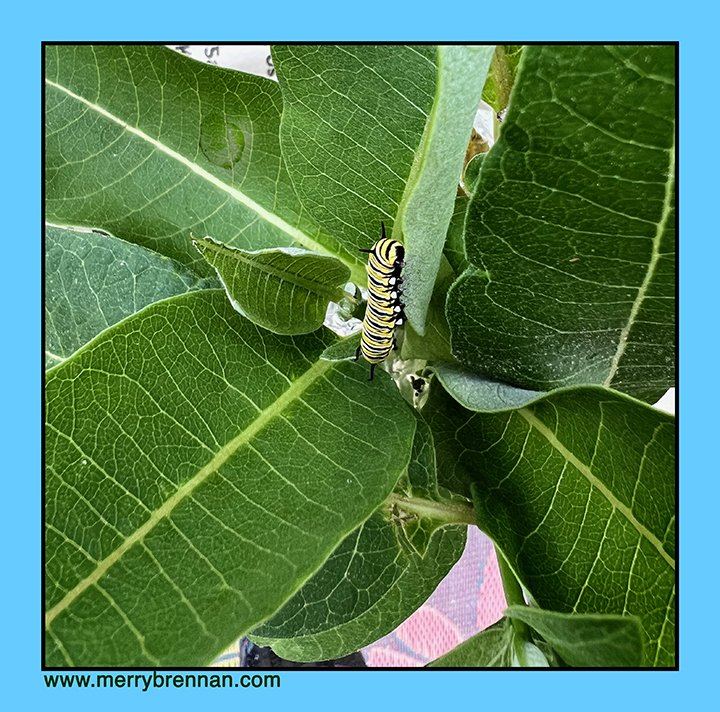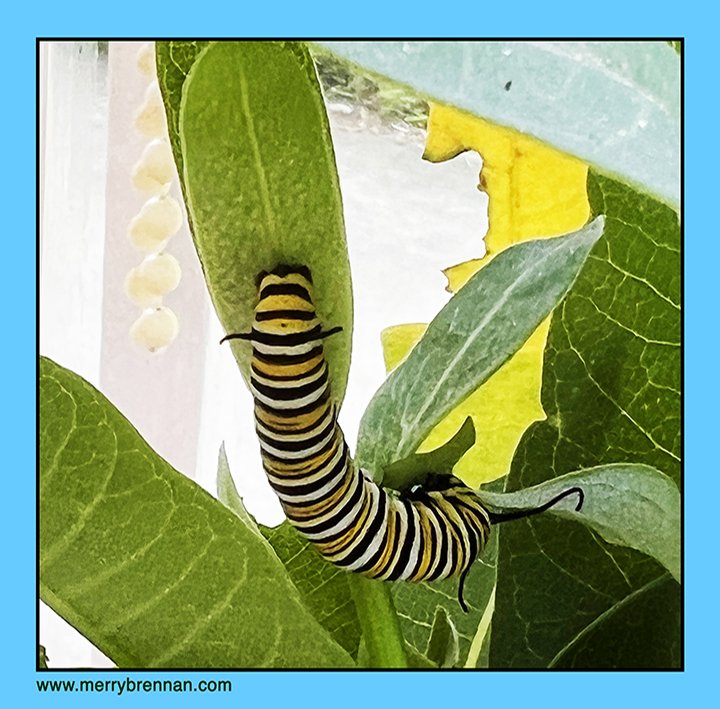More Cool Monarch Facts!



When Donna Falk’s 8th grade science class saw my recent butterfly blog, they had even more questions. Well, of course they did, because she’s a great teacher! So here are a few more cool facts about my favorite Nymphalidae.
How did butterflies evolve to have unique wing patterns?
Butterfly wing patterns (and colors) evolved through natural selection (survival of the fittest). The color/pattern combo has two main functions: attracting mates and protecting from predators. Bright colors, for example, warn predators that a butterfly is toxic. With monarchs, the caterpillars feed solely on milkweed, which can kill birds and other prey. So their orange is a vibrant signal to stay away. Dull colors serve as camouflage and let the butterflies blend into their surroundings.What does a caterpillar do in a cocoon?
I’ll use the example of monarchs, but it is the same with other butterflies, even if they do not have as beautiful a chrysalis. When it’s time for a larva (caterpillar) to become a chrysalis, it spins a silk knot onto a milkweed leaf (or in my case, the screen on my butterfly tank) from which it hangs. The larva forms its body in a J-shape and its skin splits open and falls away. (I know, pretty creepy but very cool to watch!) Underneath the old skin is a gorgeous green chrysalis that looks jellyish at first, but hardens quickly into its acorn shape with a thin gold rim around its crown.
Within this protective chrysalis casing, the caterpillar radically transforms its body, which we call metamorphosis. First, the caterpillar digests itself, releasing enzymes to dissolve all its tissues into a kind of caterpillar soup. (Yes, ewwwwww!)
But certain groups of cells known as imaginal discs survive this digestive process. Once a caterpillar has disintegrated its tissues except for the imaginal discs, these discs use the protein-rich soup all around them to fuel rapid cell division and grow into the adult butterfly’s body parts – eyes, wings, legs, etc. Depending on the species, certain caterpillar muscles and sections of the nervous system are largely preserved in the adult butterfly.What causes butterflies to have different color wings?
See #1… But here’s another fun fact about wing color:
when we look at a butterfly, we really see a combination of the wing’s pigment and iridescence. Pigment is the actual color, like brown, yellow and black, and is caused by natural pigments like melanin, the same thing that gives human skin different colors.
But we also see the wing’s iridescence, which happens when light passes through and reflects off a transparent surface, creating different hues that change depending on the angle you look from. (Think of the rainbow of changing colors you see in a “clear” soap bubble.) Butterfly wings are covered by layers of tiny transparent scales. So, for instance, what happens when a butterfly’s wings have yellow pigmentation, but its transparent scales give off red iridescence? Well, yellow + red = orange, meaning we see an orange butterfly! And when the butterfly moves its wings, the iridescence can make us see various shades or red, orange and yellow. (How cool is that?)What kinds of butterflies are poisonous?
No butterflies are poisonous enough to kill people or large mammals. But some butterflies like monarchs eat poisonous plants as caterpillars, which makes them poisonous to birds and other predators when they become adult butterflies.What type of animal is a butterfly?
Butterflies are insects. Like all insects, they have six legs, three main body parts (head, thorax & abdomen) and an exoskeleton. They also have two antennae. Butterflies and moths belong to the same order (group) called Lepidoptera. Nymphalidae is the largest “family” of butterflies.Where do you find the caterpillars or eggs to get butterflies?
Different butterflies lay their eggs on different host plants (monarchs use milkweed; swallowtails use parsley and dill). After locating her host plant, a female butterfly usually lays her eggs on the undersides of leaves, but also may choose nearby mulch or loose bark.
What else would you like to know about these wonderful winged beauties?

